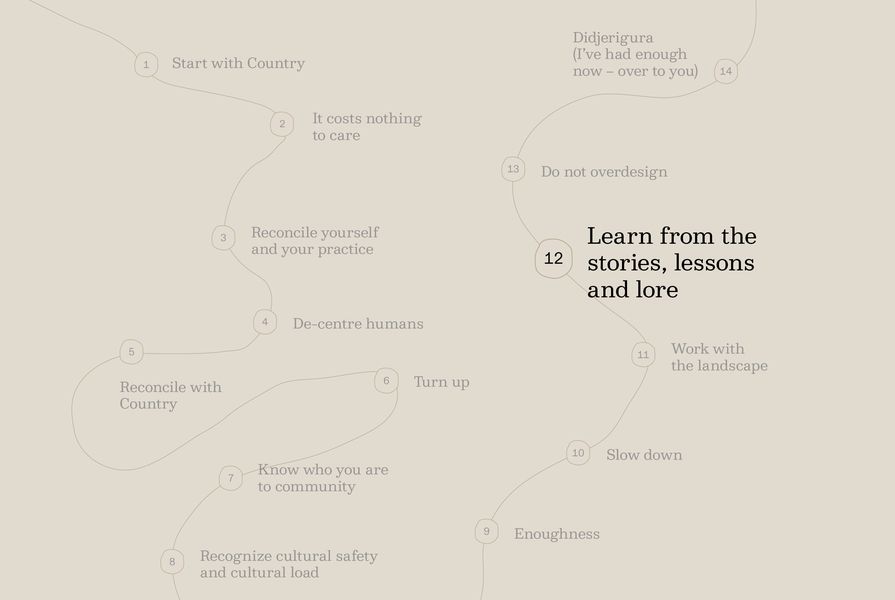For millennia, storytelling has been at the centre of First Nations cultures as the conduit through which we share and record traditional knowledge, cultural practices and history. As there is no written language, First Nations peoples have relied on storytelling as a vital educational mechanism to relay important information between generations. Each story imparts specific cultural knowledge or lessons about kinship, lore, cultural practices and Country. These stories and the way in which they are told, whether it be through art, song or dance, rely on engaging the senses to establish connections and strengthen retention.
As we grow older, our knowledge also grows and the stories deepen. Some are told to men and others to women, as no single person is capable of holding all the stories. The stories teach us how to act, our responsibilities to community and Country, and how to ensure that the stories are passed on to the next generation. They may have many meanings, depending on age, gender, season and Country, and they connect us to the past, present and future.
Colonization and Western society has changed not only First Nations cultures, but also the ways in which traditional knowledge and stories can be told. Traditional storytelling methods of song, dance and artwork have evolved into stories that are permanently etched into concrete, or depicted in building forms, for all to see. We need to ask ourselves: What is the intention of these designs and depictions? Are they included to strengthen First Nations people’s connections to Country and culture or are they to educate everyone about the stories of Country? Or is the intention something different altogether?
It is vital that design professionals understand the mechanism they are using and its purpose within First Nations cultures. As a contemporary society redefining the parameters of storytelling and our connection to the bigger picture of First Nations cultures and reconciliation, we need to develop a deeper understanding of the stories. This way, we can cultivate an authentic and considered process encompassing the mechanism, representation and design between non-Indigenous designers and First Nations knowledges.
“Learn from the stories, lessons and lore” is one 14 principles of the “What can non-Indigenous architects do” dossier. See all the principles in this dossier.
















